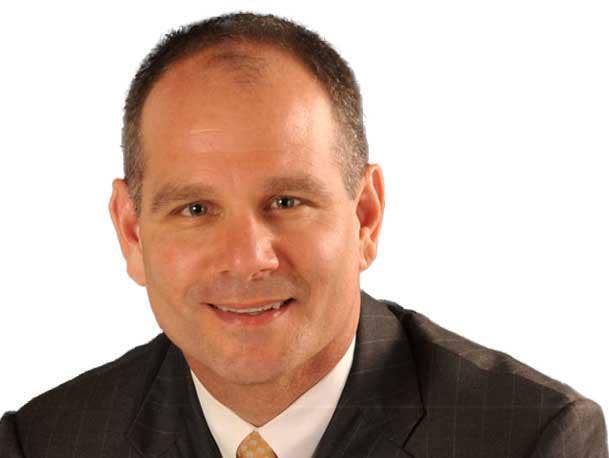Avaya CEO Calls For ‘Innovation Without Disruption’ For Enterprises
Avaya CEO Alan Masarek and Channel Chief John Lindsley shared their channel strategy with CRN which involves gradually migrating its massive base of global enterprise customers into the cloud and why a “rip and replace” approach shouldn’t be a prerequisite to the business communications modernization.

Avaya CEO Alan Masarek
Avaya is a company in flux. But the unified communications giant has a plan to work through its short-term challenges with the help of its partners who are selling hybrid cloud solutions, the company‘s executives told CRN.
Following a change in leadership, a substantial earnings miss, and cost-cutting measures resulting in a round of layoffs, new Avaya CEO Alan Masarek and Vice President of North America Channels John Lindsley this week met with the company’s channel partners to talk direction and strategy, and to harvest feedback. Avaya wants its partners to know that it’s focused on returning to innovation and tapping into its massive base of enterprise customers that have yet to migrate to a hybrid cloud model.
“The theme is innovation without disruption. Our customers, via our partners, on very different, individualized cloud journeys … customers want innovation, and that innovation is coming over the top — typically on the cloud — and they don’t want to have the disruption underneath. We can uniquely provide that,” Masarek said.
The Durham, N.C.-based company this week was met with partners “rooting” for Avaya as it works through its current challenges during its most recent partner community council, which was held face-to-face in September for the first time since the start of the COVID-19 pandemic, Lindsley said. Also significant about this year’s council was that Masarek was in attendance — the first time a CEO has joined this event, he added.
Masarek joined Avaya in August as president and CEO on the heels of a substantial earnings miss with revenue that declined 20 percent during the company’s third-quarter 2022, which ended June 30.
Avaya partners want a clearer direction and more information on the company‘s roadmap. A roadmap that involves building the predominantly cloud-based products that customers want to buy, and partners want to sell, Lindsley said. This includes IP Office for the midmarket and Avaya Aura for contact center customers that need a premise-based solution, as well as Avaya’s CCaaS solution and Avaya Cloud Office (ACO) powered by RingCentral for enterprises ready to move to a cloud-first solution.
Avaya is still the largest premise-based UC provider on the market, which gives partners the ability to transition or “partially transition” customers to the cloud based on their requirements, said Dan Silverman, president and CEO of Telanet, a Toronto-based solution provider and Avaya partner. Silverman is a co-chair on Avaya‘s partner community council.
“Working with a company like Avaya lets us cover all aspects of the business,” he said. “Some customers want to make a partial transition to cloud, so basically move to something that‘s going to overlay on top, like Avaya CCaaS. Those customers continue to want to have something on-premises for survivability. Those are some of the things that Avaya continues to offer that to be honest, a lot of the existing vendors are no longer providing.”
Avaya is generating about 80 percent of its business today through the channel, Avaya’s Lindsley said.
Moving Forward With The Channel
There are still plenty of customers who aren’t looking to rip and replace their existing premise-architected communications solutions. They may want to keep their bulletproof, “battled-tested” voice-only solution but move to the cloud for contact center as a service (CCaaS) or an omni-channel collaboration solution, Masarek said.
“The beauty is, no one wants to go through that loss of the rip and replace. We can uniquely provide what competitors can‘t. A competing [solution], by definition, is a complete rip and replace. Ours is not. It’s innovation without disruption and that really resonates with customers and partners,” he said.
Telanet‘s Silverman said that the innovation without disruption strategy is “refreshing” to partners.
“This is something we‘ve wanted for a while,” he said. “You can go back to customer and say: ’We don‘t have to take out your premise-based solution. Let’s enhance it — let‘s give you contact center in the cloud, or let’s give you a hybrid environment where some of your some of your locations may move to ACO, but others may stay in IP Office. I think partners are excited about is the ability to have multiple choices.”
Modernizing Avaya‘s massive install base and migrating these customers into the cloud in some capacity with the help of partners is one of Lindsley’s biggest goals. “I definitely want and expect our partners to maintain a centerstage role in helping write this next chapter together with us and our shared customers,” he said.
Lindsley joined Avaya in March from UC specialist Mitel, where he served as vice president and channel chief for the last three years and before that, channel director for two years. Prior to his five years with Mitel, Lindsley worked for Verizon for 17 years, having most recently served as managing director of channel sales for the carrier.